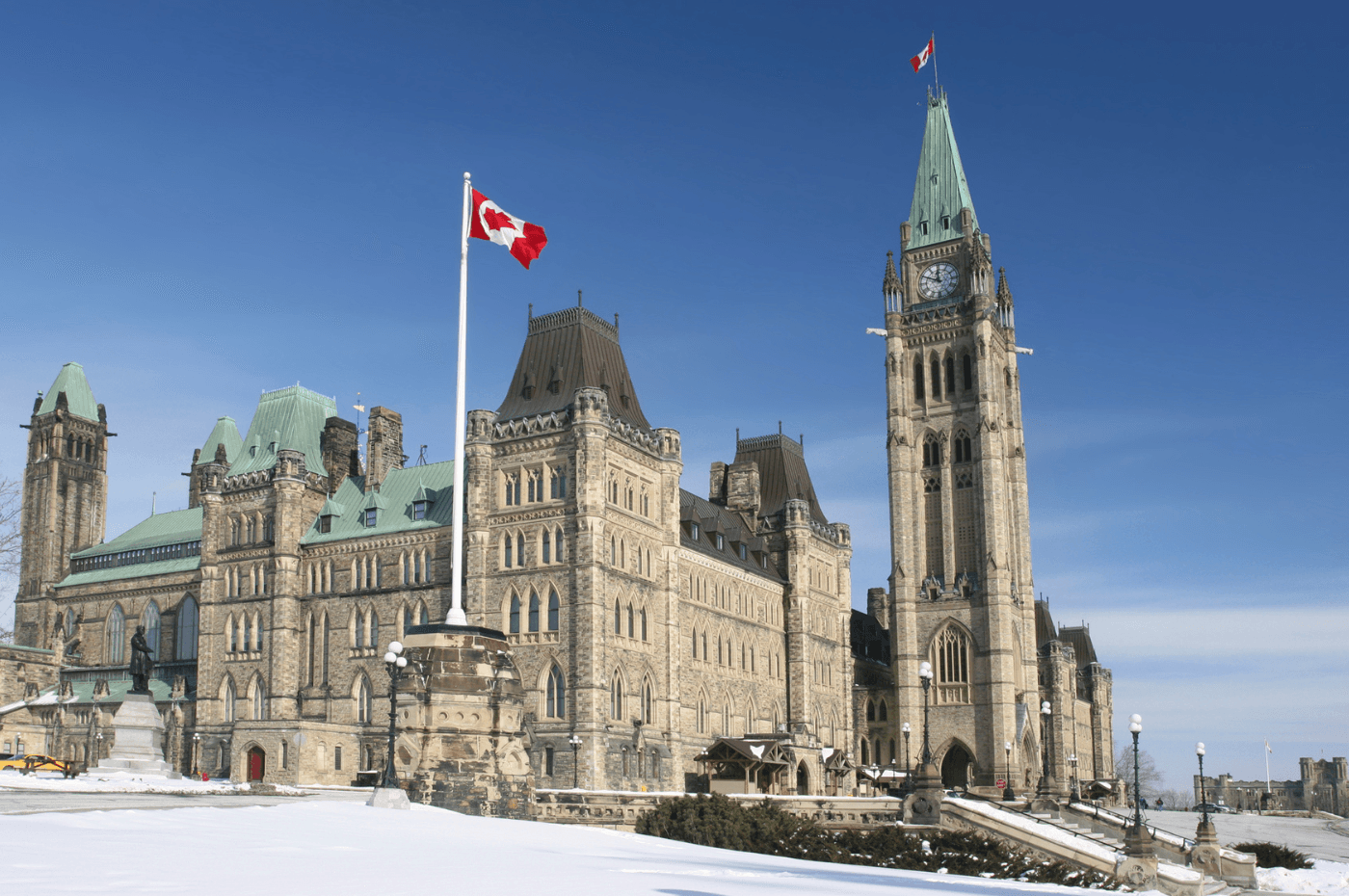Finance Minister François‑Philippe Champagne has tabled the first federal budget under Prime Minister Mark Carney’s leadership, against the backdrop of a national housing crisis that has become one of the country’s foremost economic and social concerns. Home prices continue to rise, interest rates are weighing heavily on affordability, and housing shortages affect both major urban centres and outlying regions.
The 2025–2026 federal budget seeks to address this crisis through a three‑pronged strategy: accelerating construction, facilitating homeownership, and unlocking projects stalled due to insufficient municipal infrastructure. Several key measures had been eagerly awaited: the creation of the new Build Canada Homes agency, an enhanced GST rebate for first‑time buyers of new homes, and a $50 billion local infrastructure fund. While these initiatives send a strong signal, they also raise questions about their practical implementation and real impact.
1. Build Canada Homes: an industrial approach to accelerate housing construction
At the core of the federal government’s strategy to combat the housing crisis, Build Canada Homes was officially launched in fall 2025. Backed by an initial capital of $13 billion, the agency reflects a clear commitment to industrializing residential development on a national scale. Its mandate is straightforward: to finance, develop and deliver large‑scale housing projects on public land, in partnership with private-sector players, while promoting more efficient building methods.
A modern and ambitious vision
The approach focuses on leveraging prefabrication techniques, off-site construction, innovative materials like engineered wood, and standardized floor plans and components. By combining these tools, the government aims to fundamentally transform how housing is designed and built across Canada. Its targets are ambitious:
-
Cut construction times by up to 50%;
-
Reduce building costs by up to 20%;
-
Lower greenhouse gas emissions by approximately 20% during the construction phase.
The first phase of rollout, scheduled for 2026, includes six sites owned by Canada Lands Company (CLC), located in several major cities across the country, including one in Longueuil, Quebec. This initial wave aims to deliver approximately 4,000 units, which will serve as demonstration projects to test and refine the proposed model.
The objective is to establish a scalable, repeatable framework that can be replicated nationwide with consistent quality standards, the same industrial partners, and uniform technical specifications. This standardization is expected to rapidly increase construction volumes, control costs, and shorten project timelines.
2. Enhanced GST rebate for first‑time buyers: more generous, but limited in scope
One of the most tangible tax measures in the 2025–2026 federal budget is a new GST rebate exclusively for first-time buyers of newly built homes. The initiative is intended to make homeownership more accessible for households struggling to enter the market, particularly in major urban centres, where the price of new construction far exceeds the previous eligibility thresholds.
In practical terms, the rebate offers a full refund of the GST for homes priced under $1 million. The rebate is then gradually reduced, phasing out entirely at $1.5 million. Depending on the purchase price, buyers could save up to a maximum of $50,000.
A significant shift from the previous system
Until now, a partial GST rebate had already been in place for new homes. However, it:
-
Was available to all buyers, not just first-time buyers;
-
Applied only to homes priced under $450,000;
-
Offered a maximum rebate of $6,300.
The new program represents a major improvement, better aligned with today’s market realities and specifically targeted at helping first-time buyers step onto the property ladder.
A measure that varies by province
The effectiveness of this measure, however, varies from one province to another. In Quebec, only the federal GST is eligible for the rebate, as the provincial sales tax (TVQ) is not harmonized with the federal system. In contrast, provinces like Ontario and British Columbia, where the provincial tax is integrated into the federal structure, offer greater overall savings to buyers. This asymmetry raises concerns about fairness, particularly given that construction costs are comparable across provinces.
3. A $50 billion local infrastructure fund to unblock housing projects
One of the cornerstone measures in the 2025–2026 federal budget to stimulate residential construction is the creation of a $50 billion local infrastructure fund. Spread over roughly a decade, the fund is designed to support municipalities in developing or upgrading essential public networks, including water and sewage systems, roads, public transit, electricity grids, and community facilities.
Unlocking projects where bottlenecks exist
The government acknowledges a fundamental issue: new housing can only be delivered if the supporting infrastructure exists. Many residential projects remain stalled at the planning stage simply because basic services, such as access to drinking water or wastewater treatment capacity, are either insufficient or at full capacity.
This challenge is especially acute in Quebec, where numerous municipalities have imposed residential construction moratoriums due to the fragility of their public infrastructure.
Funding tied to local reform commitments
To access the fund, municipalities will need to demonstrate a clear commitment to densification and regulatory modernization. Federal assistance will be conditional on tangible commitments, such as:
-
Promoting density around public transit corridors;
-
Modernizing zoning regulations to support a more diverse housing supply;
-
Accelerating construction permitting processes.
This give-and-take approach reflects a desire to better align public investment with measurable housing outcomes, while also encouraging sustainable urban planning practices.
A long-standing demand in Quebec
This type of targeted infrastructure funding has been a long-standing request from key players in Quebec’s housing and construction ecosystem, including the APCHQ and the Urban Development Institute of Quebec (IDU). These organizations have consistently stressed that the lack of strategic infrastructure investment represents a blind spot in addressing Canada’s housing crisis.
4. Home Accessibility Tax Credit: dual claims to be disallowed starting in 2026
The 2025–2026 federal budget includes a technical adjustment to the Home Accessibility Tax Credit (HATC), a fiscal measure designed to support renovations that improve the autonomy and safety of seniors or people with disabilities. While the program itself remains in place, a significant restriction will come into effect as of the 2026 tax year.
How the credit works today
Currently, individuals aged 65 or older, or those eligible for the Disability Tax Credit, can claim a non‑refundable tax credit of 15% on up to $20,000 in eligible renovation expenses per year. These expenses may include improvements that enhance the safety, accessibility, or functionality of a home, such as:
-
Installing access ramps;
-
Renovating bathrooms;
-
Widening doorways;
-
Any other modifications that improve mobility.
Until now, the same expense could also be claimed under the Medical Expense Tax Credit, provided it met that program’s eligibility criteria. This overlap allowed certain vulnerable individuals to optimize their tax returns through dual claims.
What’s changing in 2026
As of the 2026 tax year, this dual eligibility will end. A single expense will only be claimable under one of the two tax credits, either the Home Accessibility Tax Credit or the Medical Expense Tax Credit, but not both. The purpose of this change is to prevent duplicate reimbursements for the same expense, while continuing to provide financial support for accessibility-related renovations.
5. Elimination of the Underused Housing Tax (UHT): a symbolic measure comes to an end
The 2025–2026 federal budget officially brings the Underused Housing Tax (UHT) to an end, effective as of the 2025 calendar year. Introduced in 2022, the UHT imposed an annual 1% levy on the value of certain vacant or underused residential properties, primarily owned by non-residents.
Original objectives: combat foreign speculation
Designed as a tool to curb real estate speculation and address vacant housing amid Canada’s housing crisis, the UHT aimed to:
-
Deter passive investment in housing, particularly by non-citizens or non-residents;
-
Increase the availability of homes for sale or rent in major Canadian cities;
-
Generate fiscal revenue to fund housing initiatives.
Despite its intended goals, the tax quickly faced criticism due to its complex administration, unclear eligibility rules, and the burdensome filing process, even for property owners who owed no tax.
Elimination applies only as of 2025
The repeal of the UHT will take effect only as of the 2025 calendar year. In practice, this means no declaration or payment related to the UHT will be required starting in 2025. Property owners will no longer have any tax or reporting obligations associated with this measure from that point forward.
However, prior years remain fully subject to existing regulations. Owners who were liable for the tax between 2022 and 2024 must ensure that they have filed the required returns and paid all applicable amounts. Failure to comply may result in penalties or interest.
Critiques: an ambitious plan, but few surprises
Despite the scale of the investments announced by Ottawa and the government’s clearly proactive stance on housing, many analysts argue that the 2025–2026 federal budget lacks fresh momentum. Most flagship measures had already been revealed over the past year, particularly as part of the federal election platform, giving the budget a sense of repetition rather than renewed ambition.
Promising measures, but lacking clarity
Several initiatives remain vague: eligibility criteria, implementation timelines, and regional arrangements have yet to be defined. This lack of detail makes planning difficult for developers, prospective buyers, and municipalities seeking to act quickly.
Implementation will depend on municipal capacity
Observers also point out that successful execution may depend heavily on the capacity of local governments, especially in Quebec. Labour shortages, a lack of shovel-ready land, and regulatory constraints may hinder municipalities’ ability to convert available funding into concrete projects in the near term.
APCHQ’s View: progress acknowledged, but expectations remain high
The Association des professionnels de la construction et de l’habitation du Québec (APCHQ), in collaboration with the Urban Development Institute of Quebec (IDU), has expressed support for the housing measures announced in the 2025–2026 federal budget. In particular, the association welcomed investments in drinking water infrastructure and initiatives to speed up construction, two critical levers, in its view, to ease market congestion and respond to housing needs.
However, while the APCHQ recognizes these advancements, it also reminds the government that it submitted several targeted recommendations shortly before the budget was tabled to enhance the impact of federal policy:
-
Massively invest in water infrastructure, citing a structural deficit of $49 billion that limits residential development in many municipalities.
-
Allow intergenerational use of the Home Buyers’ Plan (HBP) and the First Home Savings Account (FHSA) so that parents can contribute to their children’s down payment without tax penalties.
-
Apply the enhanced GST rebate retroactively to March 20, 2025, to include households that purchased a home before the official implementation date, an estimated cost of $53 million.
-
Reintroduce the First-Time Home Buyer Incentive, eliminated in 2024, with more flexible eligibility criteria.
-
Update the CMHC’s APH Select program, currently seen as outdated, by revising rent and profitability criteria.
-
Encourage energy-efficient renovations in existing rental housing stock, most of which was built before 1980, through a targeted tax credit.
-
Reinvest CMHC profits into affordable housing, rather than returning them to the federal treasury.
-
Provide greater support for new construction, by removing regulatory, fiscal, and financial barriers, particularly for small and mid-size projects.
-
Foster a collaborative approach with the industry, including governments, municipalities, developers and builders, in a co-creation framework for sustainable housing solutions.
Buying or selling a home? Let a real estate expert guide you every step of the way.
XpertSource.com can help you find a real estate broker. When you tell us about your project, we put you in touch with qualified resources for free. Simply fill out our form (it only takes a few minutes) and we will connect you with professionals.





